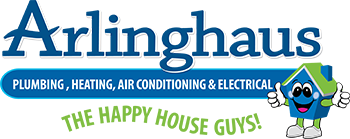Home improvement is an exercise in strategy. You have to plan your upgrades to get the maximum impact on your property value, without creating extra expenses or stress as a side effect. Property value investments always present a risk, but some risks are greater than others. By examining these eight home value statistics, you can learn how to gauge your needs for your home to choose the ideal improvements that increase your property value and your family’s comfort.
1. Value of Upgrades
The home remodeling shows often showcase the dramatically different look of a redesign. You look at a marvelous transformation of a kitchen, bathroom or basement from a drab, outdated design, and you wonder at the possibilities for your home. The trouble is that homeowners pay a large price for these transformations and might only recoup a bit over half of what they paid. A bathroom remodel may only yield a 65 percent increase in value when compared to the expense. Major kitchen remodels are about the same. By comparison, very small improvements may be worth their weight in gold. Replace your garage door and reap a 91 percent increase of the cost, or get 116 percent of what you paid to beef up your attic insulation. The best part of these particular upgrades is that they pay off in better security and lower energy bills.
2. Area Home Values
Targeting home improvements to increase property value requires you to keep one important thing in mind: property value only matters if the price matches what buyers in the area are prepared to pay. That number fluctuates throughout the year and from year to year. As a result, you are best off doing some research into what buyers in your area are interested in seeing, and what they typically pay. For example, the city of Elsmere, Kentucky has a median home sale price of $107,500. It is not unreasonable to conclude that, with home prices being less than half that of the current national average of $217,600, you may not increase your home’s value with certain kinds of home improvements. For example, if you pay $20,000 to make some upgrades to your kitchen, you may not be able to increase the sale price of your home by $13,000.
3. Home Inspection Rates
Paradoxically, the most detailed information you may ever receive about your home comes when you are ready to sell. Unfortunately, this is can really hurt many homeowners. When they prepare to sell, they clean up their home, perform some minor maintenance and repair, and contact a real estate agent to get a sense for the overall home value. The agent will give them some estimates, and then they may arrange for a home appraisal to confirm the numbers. However, this last step often occurs after the home is already listed and there is an interested buyer. The services of an appraiser and a home inspector are usually paid by a prospective buyer. While only about 77 percent of homebuyers request and pay for an inspection, about four out of five inspections return a concern that calls for a contingency in the sale contract. Paying the upfront cost of home inspection can give you the detailed information you need to make the right repairs so there are no delays in selling your home and you’re not taking a hit on listing price.
4. The Price of Procrastination
And speaking of home inspections…why wait until you’re ready to sell for a thorough inspection? Home inspections can turn up all kinds of problems, of which you may or may not be aware. Even if you do not intend to sell your home for several years, it pays to fix minor problems while they are still small. The longer you wait to fix small problems, the more likely they will turn into big, expensive problems. Invest the time to go through your home’s structure, equipment and systems to look for problems. Take your plumbing, for example. Hiring a plumber to fix a leaky pipe will cost you about $281, on average. Resolving water damage is where you’ll really pay the price of procrastination. While fixing the actual damage runs around $2,100, you may end up paying far more to replace your possessions and deal with the hassle of needing significant repairs for your home.
5. Cost of an Attractive Nuisance
A swimming pool sounds like a wonderful thing to have during the hot summer. The trouble is that adding a swimming pool to your property creates a rippling effect of expenses and complications for you as the homeowner. First, experts (even those who advocate installing a swimming pool) caution you not to expect a great improvement in your property value with a pool, despite the $20,000 you will spend. Second, you must pay for maintenance. If you hire someone to keep it clean, you may pay about $75-$100 per hour. Third, you have to keep everyone in the neighborhood safe from the pool. Pools are classified as an “attractive nuisance, which means neighbor children may try to sneak into your pool, and it is on you to prevent them. As a result, swimming pools may increase your homeowner’s insurance premiums by hundreds of dollars per year, but you won’t recoup those expenses when it comes time to sell.
6. Fluctuating Home Values
You are probably already aware that home values rise and fall from year to year, depending on the local market. However, home values can also vary radically from season to season. Real estate experts often track home value changes from one year to the next because seasons dictate homebuyers’ interest. The best time to sell or buy a home is typically spring and summer, because that is when demand and selection are highest. However, this might not be the point of highest value. In the past year in Elsmere, home values dropped to $91,500 in August but peaked to $119,000 this past March. Property value investments should be planned with the goal of getting the maximum benefit from current home values.
7. Paying for Trendy or Rare Upgrades
You would not be faulted for trying to make your home truly unique. However, the more you pay for something unique, the bigger the risk you take. This is even more accurate for any upgrades you make based on trends. When you choose to install hardwood flooring throughout your home, you are making a decision that could last for decades. Buyers’ preferences change more frequently, however. That questionably-sourced tigerwood that cost you $20 a square foot may not be worth almost anything once the trend toward exotic hardwood ebbs. These days, most experts strongly suggest that you select woods that have sustainably harvested and do not look too unusual, to avoid clashing with future homebuyers’ expectations and values.
8. The Price of Whimsy
Ultimately, your home should be comfortable and practical to you. However, the current trend toward specialization of parts of the home (e.g. wine rooms, home theaters) has a high risk/reward ratio. In certain parts of the country, with a specific clientele, adding these kinds of specialty rooms to the home could dramatically increase property value and also garner a greater amount of interest from buyers. However, for the average home, the space needed to create these spaces can damage the selling points of the home. You will likely spend at least $20,000 to outfit a home theater that is properly installed and designed for maximum effect. However, you may lose a great deal of value by sacrificing a bedroom when you only have a few.
Make the Most of Your Investment
Building your investment in your house is a priority for you, to save money, increase property value and maintain your overall happiness with your home. In order to reap these benefits, you must target your home improvements to those that will give you the biggest bang for your buck. With these statistics in mind, you are ready to plan future home upgrades that are the most practical for your home and your neighborhood.


